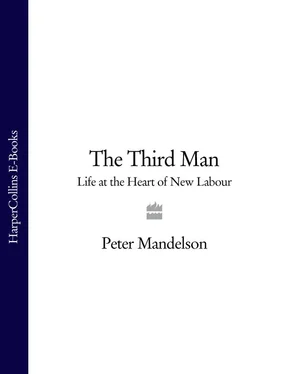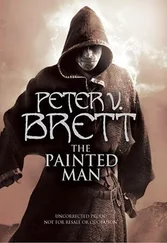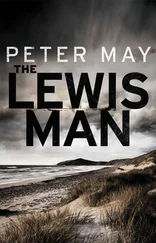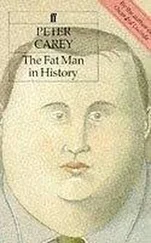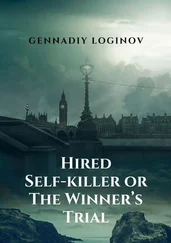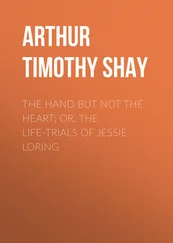Two of the final programmes I produced drew me steadily in that direction. The first came in the wake of the 1983 election collapse. It was about Neil Kinnock, the Welsh MP I had got to know when I was working for Albert, and Neil was Shadow Education Secretary. After the election he had replaced Michael Foot as Labour leader, and he had begun the work of trying to rescue and rebuild the defeated and dejected party. The second was more broadly about the changing political landscape, exploring signs of disillusionment with Mrs Thatcher, the emergence of the SDP, and the prospects for a Labour revival. Watching tapes of these programmes now, I am struck by my underlying optimism. Naïvety, perhaps, would be a better word. I truly believed that Neil’s leadership could mark at least the start of Labour’s comeback. I felt a growing desire to come back myself as well.
My return began in a restaurant in Pimlico, shortly after Weekend World went off the air for its summer break. During my three years at LWT, I had remained in touch with Charles Clarke, and every six months or so we had lunch together. He was still with Neil. When we met in the summer of 1985, I told him how much I missed fulltime politics. He suggested I help out in a forthcoming parliamentary by-election in the Welsh constituency of Brecon and Radnor. ‘It’s in the neighbourhood,’ he added, referring to a little two-up, two-down cottage I had purchased the year before near the Welsh border. If nothing else, television paid better than politics. My salary had risen to the princely sum of £31,000, and a return to Labour, no matter what role I played, would pay nothing like that amount. That I never gave this much thought was a measure of the eagerness I felt to be part of the party’s recovery and reconstruction.
I had already planned to be at the cottage for the summer, and I leapt at the opportunity to help out in the campaign. When I arrived, however, it was not really a campaign. There were lots of people at the local HQ, but no single person in charge, no strategy, no plan of action. I was deputised to accompany our candidate, Richard Willey. A writer and educationist, he was the son of the long-serving Sunderland MP and future Labour chairman Fred Willey – also a distinguished resident of Hampstead Garden Suburb. Richard and I immediately took to each other. I helped plan his appearances and speeches, advised him on how to handle himself with the local press, and kept his spirits up as we travelled around the large constituency. All of this was good experience that would come in handy in my later political life.
It was a solid, professional campaign, eventually. It also ended in defeat. The Tories lost the seat, but by a narrow margin we were outpolled by the Liberal candidate. The turning point came a few days before the election, and probably should have served as a warning as I embarked on my return to active Labour politics. With the miners’ strike only recently over, Arthur Scargill publicly demanded that a future Labour government release all those who had been detained during the strike, and reimburse the union for all the money it had cost.
I was not to be deterred, however. Charles told me during a campaign visit that the Publicity Director at national party headquarters had left, and was to be replaced by an overall Director of Campaigns and Communications. It seemed like the perfect job for me. When I told him I wanted to go for it, Charles said that by all means I should do so. He added, however, that there would be other strong candidates. I later discovered that despite this note of caution, Charles argued my case strongly with Neil. The evening before the selection meeting in front of Labour’s full thirty-member National Executive Committee, Neil made it clear to colleagues that I was his preferred choice.
Roy Hattersley, now his deputy and Shadow Chancellor, also backed me to the hilt. I had remained in touch with Roy during my time at LWT. After the 1983 election I had spent most of my free hours helping David Hill organise and support Roy’s campaign for the leadership. I saw him as a more experienced and more rounded figure than Neil, and a better bulwark against the Bennites. I had a further referee in John Prescott, who provided a supportive reference, although with a cryptic handwritten postscript: ‘Peter will do the job fine, as long as he keeps his nose out of the politics.’
I got the job, but only just. A mere handful of votes decided it. Two NEC members in particular would go on to help not just me but the broader push for change in Labour: the Crewe MP Gwyneth Dunwoody, who was in charge of the publicity subcommittee, and a forward-looking trade union leader named Tom Sawyer, General Secretary of Labour by the time of the 1997 election.
In my presentation to the NEC, I had echoed the optimism I felt in my final months at LWT. I argued that in the two years since our general election drubbing, the popular mood had begun to change. There was a new scepticism about the Tory government. If Labour could project a more popular, relevant, united message – and modernise its communications ideas and strategies – we would have an opportunity to recover momentum, and power. I genuinely believed this. Yet nothing in my apprenticeship since leaving Oxford – my experience of the TUC, ‘Red’ Ted and Lambeth, my work with Albert Booth or Weekend World – had prepared me for how difficult it would prove, or how long it would take.
From the outside, 150 Walworth Road, near the Elephant and Castle in south London, was a handsome, red-brick battleship of a building. On the inside, it perfectly mirrored the party for which it was the national headquarters. The cramped offices, smoky hallways and paper-strewn conference rooms were disjointed and dishevelled. So was the machinery through which Labour made and presented what passed for policy. My cubbyhole consisted of a wobbly chair, a dodgy-looking three-legged table wedged up against the filing cabinet to balance it, a World War II-vintage intercom, and a dying spider plant on the windowsill behind me.
Barely two years had passed since our collapse at the polls. Michael Foot had retreated to the backbenches. He took the blame for the rout, but it more properly belonged to the party’s real masters: the Trotskyite entryists organised in Militant, and the ‘softer’, or at least subtler, leftists whom Tony Benn had been rallying ever since we lost power in 1979 – in fact, ever since we had lost power under Harold Wilson in 1970. The idea of Labour as a party of government, with any regard for what voters might actually feel, had been abandoned. Neil Kinnock, however, was now leader, and it was clear he saw the need for change.
A few days before I started work in October 1985, Neil had shown the flair, and the guts, that this was surely going to require. At the party conference in Bournemouth he had thundered against the hard-left Labour council in Liverpool, the epitome of how out of touch we had become. As I heard him speak, I couldn’t help but think back to Ted Knight and the Socialist Republic of Lambeth. ‘I’ll tell you what happens with impossible promises,’ Neil had said. ‘You start with farfetched resolutions. They are then pickled into a rigid dogma, a code, and you go through the years sticking to that – outdated, misplaced, irrelevant to real needs. You end in the grotesque chaos of a Labour council – a Labour council – hiring taxis to scuttle round a city handing out redundancy notices to its own workers. I’m telling you – and you’ll listen – you can’t play politics with people’s jobs, and with people’s services!’ How long had I waited for a Labour leader to say that? The fight was on for a Labour Party that again served, and connected with, the interests of the people of Britain. A few weeks short of my thirty-second birthday, I was excited to become a part of it.
Читать дальше
